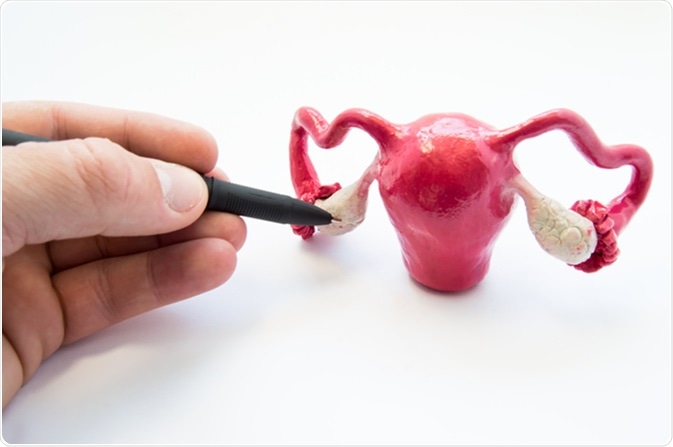Anovulation is a term which refers to a menstrual cycle in which an egg is not released from the ovary.
Chronic anovulation is a medical condition related to difficulty in conceiving, in which the ovaries are in a steady state of not functioning in their usual cyclic rhythm and failing to release eggs as usual. This leads to irregular periods, scanty cycles and often a total lack of menstrual bleeding for the length of six normal cycles or more.
However, the ovaries still contain healthy eggs and ovulation (egg release) can be induced by treating the cause of anovulation. It is important to realize that anovulation is the leading cause of few or scanty periods in women belonging to the reproductive age group.

Image Credit: Shidlovski / Shutterstock
Causes
The causes of anovulation are classified as those which respond to drugs which induce ovulation, and those which do not.
- Anovulation which can be treated by inducing ovulation
- Hypothalamic-pituitary disease
- Hypogonadotropic hypogonadism: this refers to lack of secretion of the hormones which regulate the cycle of events in the ovary, by the hypothalamo-pituitary axis. Those women who are undernourished or exercise too rigorously are at risk.
- Sheehan's syndrome is a condition in which the anterior pituitary is seriously damaged by cutoff of its blood supply.
- Kallman's syndrome is a condition in which the hypothalamus is defective at birth, and the child often lacks a sense of smell (anosmia)
- Stress-related deficiency of hypothalamic hormones
- Cranial irradiation or surgery which destroys hypothalamic/pituitary tissue
- Hyperprolactinemia is a condition in which a pituitary tumor produces excessive amounts of the hormone called prolactin, which in turn inhibits the secretion of hormones which regulate the ovarian cycle
- Ovarian disease
- Polycystic ovarian disease (PCOD) is the most common cause of anovulation and accounts for 7 of every 10 cases
- Endocrine disorders such as hypothyroidism and congenital adrenal hyperplasia
- Anovulation which is resistant to ovulation induction
- Premature menopause or premature ovarian failure: this refers to the rapid destruction of eggs in an ovary before the usual age of menopausal changes, and is irreversible.
- Genetic defects which cause premature menopause, most commonly Turner’s syndrome in which a woman has only one X chromosome.
- Surgical removal of the ovary
- Radiotherapy or chemotherapy which damaged the ovary
Diagnosis and Management
The diagnosis of anovulation and determination of its underlying cause require patient history and specific tests of hormone levels, ultrasound imaging of the ovaries and other imaging tests. Hypothyroidism, obesity and high prolactin levels are treated appropriately, with medication and lifestyle changes as required.
The induction of ovulation is done using a variety of medicines, including the implantation of a pump which releases pulses of gonadotropin-releasing hormone at regular intervals to normalize ovarian actions, if the woman has a hypothalamic cause for her anovulation. If the ovary is at fault, as in PCOD, a local agent such as clomiphene citrate is used instead to bring about egg release. Metformin, a drug which reduces the blood sugar level, is also used in PCOD. All such treatments need to be monitored both for evidence of efficacy and to minimize the adverse effects, the most important being multiple pregnancy.
Surgical treatment of anovulation consists of ovarian drilling (using minimally invasive techniques) which somehow restores egg release in a significant percentage of patients with PCOD who do not respond to medical treatment.
Further Reading
Last Updated: Feb 26, 2019